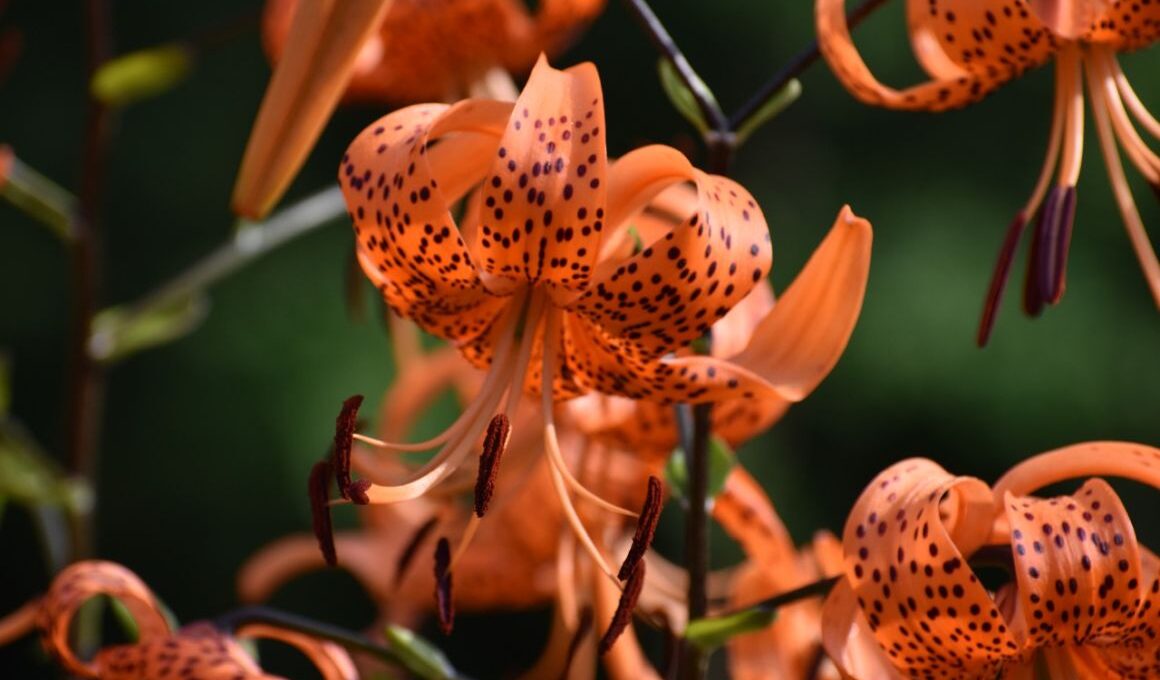Tiger lilies are a hardy perennial that can thrive in many types of soil, making them a great choice for home gardeners. With a little bit of care, your tiger lily flower will be blooming in no time!
Tiger Lily Flower (Lilium Lancifolium): Morphology
The tiger lily flower is a member of the lily family. It is a perennial plant that blooms in late summer. It has long, strap-like foliage and large, showy flowers. The flowers are usually orange or red with black spots.
The flowers range in size from 4 to 6 inches (10 to 15 cm). The petals are slightly recurved and have a ruffled edge. The flowers are borne on stems that can reach up to 6 feet (1.8 m) in height.
The tiger lily flower is native to Asia and can be found in China, Japan, and Korea. It is also found in the mountains of Siberia. It was introduced to Europe in the 18th century and has since become naturalized in many parts of the continent.
This flower gets its name from its resemblance to a tiger’s fur. The spots on the flower’s orange petals are said to look like a tiger’s markings.
The Lilium lancifolium is a popular garden plant and is often used in cut flower arrangements. These bright orange flowers are also dried and used in potpourri. It is also known as Lilium tigrinum.
Planting Tiger Lilies: Tips for Gardeners
If you’re interested in planting tiger lilies, there are a few things you should keep in mind. First, choose a sunny spot in your garden for them. Tiger lily plants need at least six hours of sunlight each day. They also prefer well-drained soil.
When it comes time to plant your lilies, dig a hole that’s about twice the size of the bulb. Plant the bulbs with the pointy side up and cover them with soil. Water them well.
Tiger lillies are relatively low-maintenance and easy to grow flowers. They don’t need to be fertilized often, but you should water them regularly, especially during hot weather. Keep the soil moist, but not soggy. If you live in an area where deer are a problem, you may want to consider fencing your garden or using deer repellent.
They are not susceptible to many diseases or pests. However, the bulbs can be damaged by frost, so they should be planted in an area that is protected from the cold.
With a little care, your tiger lily flower will grow well and add beauty to your garden for many years to come.
Are Tiger Lilies Poisonous?
Many gardeners are drawn to the tiger lily bulbs for its showy flowers. These large, orange blooms with black spots make a dramatic statement in the garden, and they’re relatively easy to grow. But before you add tiger lilies to your landscape, you should be aware that they’re considered poisonous.
All parts of the tiger lily flower contain toxic substances that can cause severe illness or death in humans and animals if ingested. The most toxic parts of the plant are the bulbs, stems and leaves, but even the flowers can cause problems if eaten in large quantities.
What Does the Tiger Lily Symbolize?
The tiger lily is a special flower with a rich history and symbolism. In China, this lily is known as the “flower of happiness.” It is also the national flower of South Korea. The tiger lily flower symbolizes strength and courage. In the language of flowers, it can also represent pride and wealth. The tiger lily, among other types of lilies, is also a symbol of summer and purity.
Have you ever seen a tiger lily? It’s not surprising that it’s getting more and more popular in floral arrangements and flower delivery all over the world. These large flowers are pretty special and if you are considering adding them to your garden – be sure to follow our gardening tips!



















